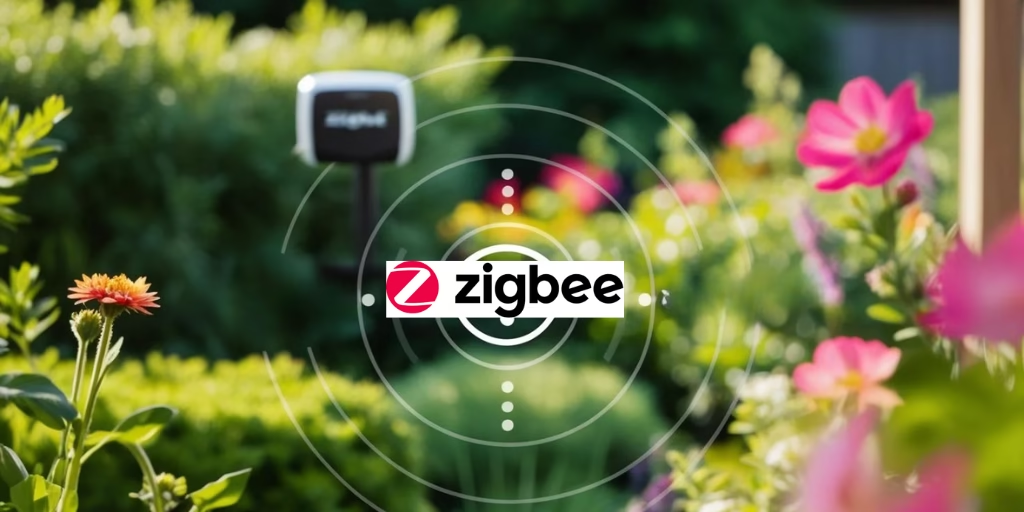How to Boost Zigbee Range for Reliable Outdoor Connectivity
Zigbee is a very popular choice for smart home technology. Its unique mesh protocol makes Zigbee a powerful solution for creating networks that are robust, scalable, and reliable. But when it comes to covering outdoor spaces, optimising your Zigbee network can require a bit of thought.
Here are ways to boost (extend) your Zigbee wireless range outdoors.
Understanding Zigbee’s Mesh Protocol
Zigbee operates as a mesh networking protocol, meaning devices within the network can communicate indirectly by relaying signals through other devices. This creates a network where signals can “hop” from one device to another, significantly increasing coverage and reliability.
Considerations:
- Mains Powered Devices Extend the Mesh: Nearly all Zigbee devices that are plugged into mains power automatically act as repeaters. These repeaters help relay signals further by creating additional pathways for communication, extending the range of the network.
- Battery Powered Devices Do Not Repeat Signals: Zigbee devices running on batteries typically don’t function as repeaters. This is because battery powered devices are designed for efficiency and low power consumption, which limits their ability to relay signals.
Zigbee Range and Outdoor Coverage
In ideal conditions, Zigbee can have a range of up to 20 metres indoors and 40 metres outdoors. However, obstacles like walls, metal structures, and environmental interference (like other electric devices) can significantly reduce this range. Knowing how Zigbee signals can be impacted by obstacles can help with planning outdoor coverage.
Options for Extending Zigbee Wireless Range
To optimise Zigbee performance and extend the wireless range to outdoor smart devices, consider these strategies:
- Zigbee Repeaters: Adding mains powered Zigbee devices such as smart plugs, smart bulbs or light switches can act as repeaters to strengthen the mesh network. These repeaters can help bridge the gap between indoor Zigbee hubs and outdoor devices. There is no configuration required, the mains powered devices automatically act as repeaters once they are connected to a smart home system.
- Position Your Zigbee Hub Strategically: Place the Zigbee hub or gateway near a window that face the outdoor area. This minimises obstacles and maximises signal reach.
- Install Outdoor Rated Zigbee Devices: Outdoor rated Zigbee devices, such as smart power sockets \ outlets, can act as repeaters while withstanding weather conditions. Make sure the devices have an appropriate IP rating for outdoor use.
- Avoid Signal Interference: Zigbee operates on the 2.4 GHz frequency band, which can overlap with Wi-Fi signals. To reduce interference, ensure your Zigbee network is running on a channel that doesn’t conflict with your Wi-Fi. TIP: It is much easier to change the WiFi channel than the Zigbee Channel.
- Zigbee Repeaters: There are devices that are specifically designed to repeat and extend Zigbee singles. They have no other purpose. These devices most often look like USB thumb drives. Simply plug them into a USB port for power, add to your smart home system and they will boost Zigbee signals
Tips to Improve Zigbee Mesh Network
- Deploy More Repeaters: The more mains powered Zigbee devices you add, the stronger and more resilient the mesh becomes.
- Test Signal Strength: Use the app associated with your Zigbee hub to test signal strength and identify weak spots in the network.
- Plan Your Layout: Avoid placing devices in locations with heavy interference (e.g., near large metal structures).
- Monitor Device Health: Ensure all Zigbee repeaters are functioning correctly, as a single faulty device can create gaps in the network.
- Garden Sheds and Cabins: If you have a dry space in your garden, like a shed or cabin, then install a repeater here. Ensure it is in range of your Zigbee Hub or another repeater that can directly or indirectly reach the Zigbee hub
LoRa – Long Range Wireless Smart Home Technology
While Zigbee is an excellent protocol for short range communication within smart home networks, outdoor applications sometimes demand a different approach, this is where LoRa (Long Range) technology can be a more sensible option.
LoRa is a wireless communication technology designed for long range, low power data transmission. It operates on sub GHz frequencies, which offer extended coverage compared to Zigbee’s 2.4 GHz band. For outdoor spaces that are expansive, or environments where obstacles like walls, trees, and other physical barriers could hinder Zigbee’s signal, LoRa’s ability to maintain connectivity over several kilometres is a big advantage.
If you’re interested in improving the range of your outdoor WiFi then please take a look at how to boost outdoor wi-fi signal for smart home devices
Conclusion
Extending Zigbee coverage for outdoor smart devices is achievable with some planning. By leveraging Zigbee’s mesh protocol and ensuring an optimal network setup, you can seamlessly connect devices in your garden, shed, or other outdoor spaces. With reliable connectivity, your smart home will function effortlessly, indoors and outdoors.





